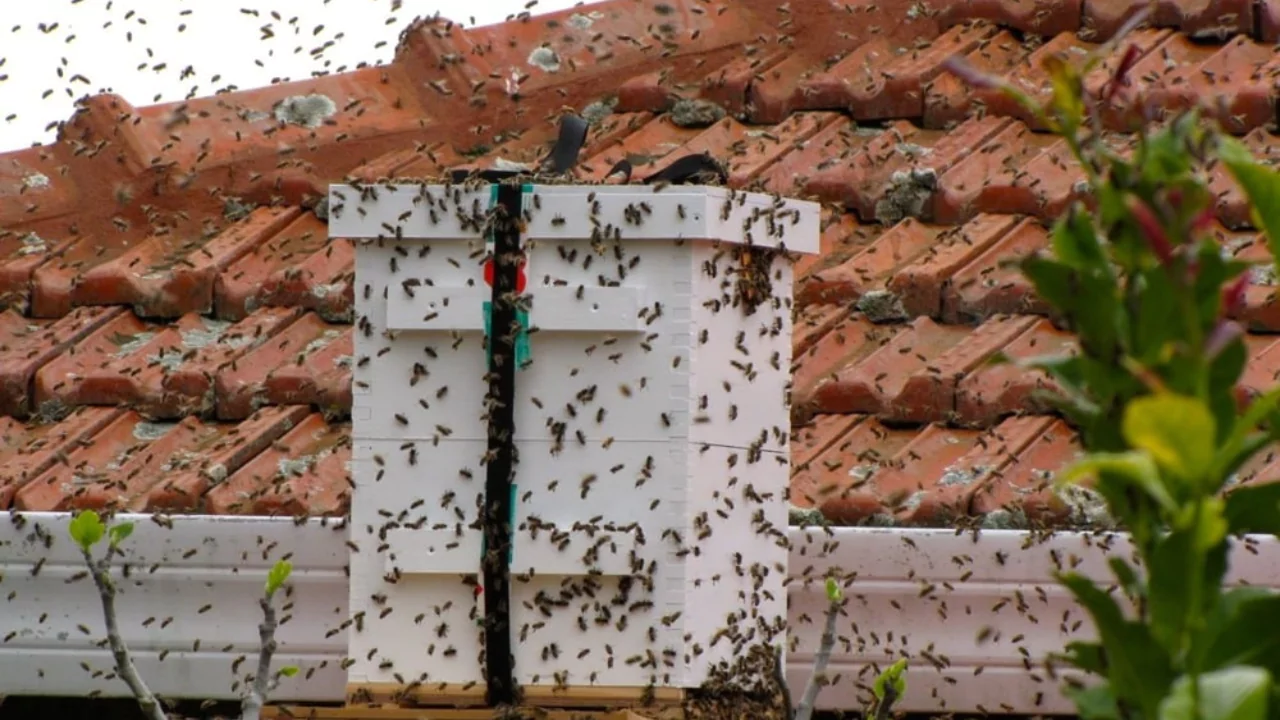
Ever had a swarm of honey bees trying to take over your house? We have. Our first stop was the extension office in our area in order to know more about the behavioral patterns of the honey bee. We also needed to learn how to remove the honey bee swarm from the house in a way that was gentle but swift. Below, we provide a brief summary of the actions you can take to mitigate the swarm and some insights into honey bee behavior.
Honey Bee Preservation: Importance of Protecting Pollinators
In this article, Pollinating New Ideas from University of Minnesota Extension, Marla Spivak, researcher and entomology professor, points out:
“Honey bees and wild bees pollinate more than 70 percent of our fruits and vegetables. From a monetary standpoint, their value is estimated at 16billioninU.S.farmincome(insectpollinatorsingeneralaccountfor16billioninU.S.farmincome(insectpollinatorsingeneralaccountfor29 billion). Yet our bees are dying at alarming rates. Since 2007, an average of 30 percent of all U.S. colonies have died every winter due to disease, parasites, lack of plant diversity, pesticides and a flowerless landscape.”
So, knowing this and after all this state’s insect is the honey bee, we know to protect our pollinators.
Around the chimney where the bees are constantly coming in, what do you do? Not just one, but thousands of honey bees.
The familiar buzz marks the return of the swarm that has become unmistakable over time. One appears in the living room, then another, then another. Like clockwork, the bees come back to this place. This year, there was a shower curtain taped over the fireplace prompt as soon as the bees were heard.
Doors and windows are opened in every attempt to lure the bees out with a hope that they have already done enough exploring to be satisfied. At least, every year the swarm leaves, thank goodness, coming back later. The constant loop of a house full of bees is vastly improved to simply a mess of bees.
As conservationists and horticulturists, we want to sustain our dwindling population of honey bees. However, what action can be taken if there is a beehive located in the wall of your house, or if bees are swarming around your household? For more details regarding honey bee swarms, we contacted our local extension office. In this article, we describe how to effectively remove honey bees from your house as well as offer relevant preventative measures:
3 Ways to Get Rid of Honey Bees
1. Call a Beekeeper
Some beekeepers will be willing to capture the swarm and other beekeepers will look for easier solutions. When full swarms are sought after, there are a few options. These represent a fraction of the methods used and several approaches are commonly available.
It must also be noted that access to some swarms may be challenging and in these cases, extraction might involve cutting into a building’s wall siding. This tends to be really inconvenient and a lot of beekeepers prefer to buy starter hives or a small nucleus of bees instead, referred to as a nuc.
Try a bee keeper first. Especially, if the swarm is easily accessible.
2. Call an Exterminator
Calling an exterminator is a possibility, as well. This is often used as the last resort. Homeowners can eliminate the colony of bees if they are harmful to the homeowner or structure.
If bees are inside the house, we are within our rights to eliminate them. The law does not protect honey bees from extermination. Treating the swarm incurs a cost of approximately $150.00.
3. Use a Swarm Box
Swarm boxes or trap out boxes can be set in the yard beside the swarm with the aim of capturing the bees through baiting them to fill the swarm box with their nest. Nonetheless, swarm boxes can encourage other bees, worsening the problem.
Advice on Preventing Honey Bee Swarms:
If you have honey bees returning, here is what you need to know:
1. Get the honeycomb out from the structure.
If robber bees are seeking for honey in a given structure, at one time honey must have existed there. To prevent the bees from coming back, the remaining hive in the wall needs to be extracted. Even old hives tend to attract returning swarms, necessitating removal.
2. Seal up all entrances.
To stop bees from entering siding, seal gaps on the exterior of the house. Once a hive is active, honey bees will investigate previously established hives. Honey bees swarm to split a colony, to evaluate whether conditions suit the establishment of a new hive, or to steal honey.
Honey bees have a strong sense of smell. Any gaps in siding can easily lead to a structure. A fireplace is one such hallowed center. Diligently inspect the area around the fireplace for gaps that can be sealed. During swarming seasons, honey bees are especially active and quick to take to the air. Spray foams designed to seal cracks and gaps are often used during this time.
3. Honey bees have a strong sense of smell for six miles.
Honey bees can smell a distance of six miles. If you keep bees or have hives nearby, that’s a long distance robber bees can travel.
4. Swarm activity can be honey bees robbing other hives.
Swarm activities during the warmer months are a sign of robber bees seeking out other hives to pilfer.
In gardening zone 7b, honeysuckle is harvested in May, which coincides with the warm spring days when bees are particularly busy. For those who keep bees, it is not uncommon to observe robber bees taking to the air to raid other colonies for honey.
5. Monitor flight behavior of honey bees.
You will see distinct patterns in activity if bees are attempting to establish a hive in a given structure. Many times, you observe bees flying straight and purposeful in their movements rather than aimlessly swarming.